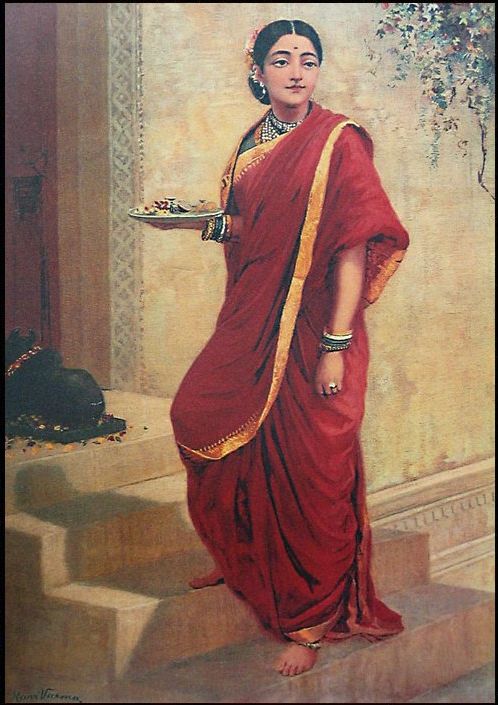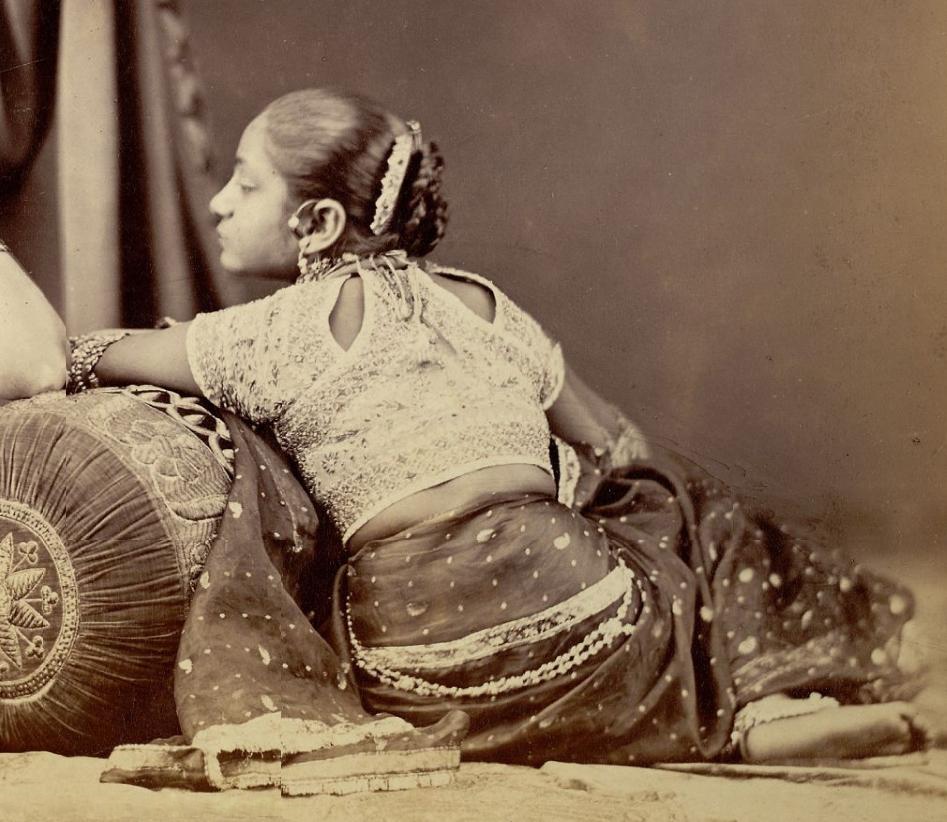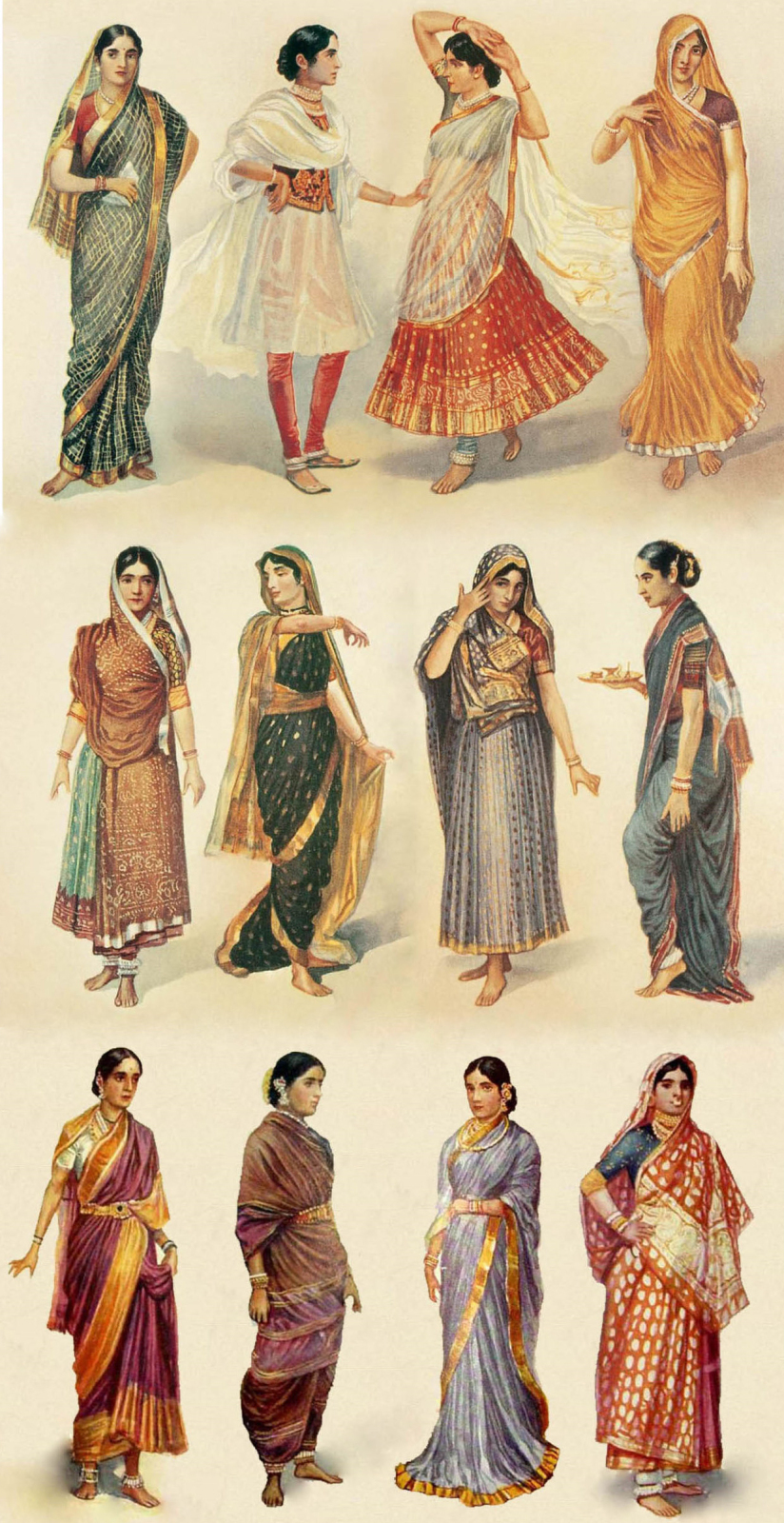|
Stanapatta
''Stanapatta'' (Stanmasuka) was a loose wrap cloth for the upper body. It was a chest band used in ancient India. It was a simple upper garment of the females during the ancient time similar to the ''mamillare'' or ''strophium'' used by the Roman women. Stanapatta was a part of '' Poshak'' (the women's attire). Kālidāsa mentions ''kurpasika'', another form of breastband that is synonymized with uttarasanga and stanapatta by him. Innerwears for lower parts were called ''nivi or nivi bandha''. The Skandamata sculpture of Malhar depicts the use of stanapatta and ''kanchuki'' in ancient times. Style The garment was mainly used by married women to cover the nipples or breasts completely. It was also decorated with embellishments and worn with many successor clothes of ''uttariya'', for instance, Sari A sari (sometimes also saree or shari)The name of the garment in various regional languages include: * as, শাৰী, xārī, translit-std=ISO * bn, শাড়ি, ś ... [...More Info...] [...Related Items...] OR: [Wikipedia] [Google] [Baidu] |
Choli
A choli (Hindi: चोली, Urdu: چولی, gu, ચોળી, mr, चोळी, Nepali: चोलो ''cholo'') (known in South India as ''ravike'' (Kannada: ರವಿಕೆ, Telugu: రవికె, Tamil: ரவிக்கை)) is a blouse or a bodice-like upper garment that is commonly cut short leaving the midriff bare, it is worn along with a sari in the Indian subcontinent. The choli is also part of the ghagra choli costume in the Indian subcontinent. In Northern Gujarat bordering Rajasthan, Palanpur in particular (Banaskantha), Polku, gu, પોલકું word was used. Evolution The choli evolved from the ancient '' stanapatta'', also known as ''kurpsika'' or '' kanchuki'', which was one of the forms of three-piece attire worn by women during the ancient period. This consisted of the '' antriya'' lower garment; the '' uttariya'' veil worn over shoulder or head; and the ''stanapatta,'' a chestband, which is mentioned in Sanskrit literature and Buddhist Pa ... [...More Info...] [...Related Items...] OR: [Wikipedia] [Google] [Baidu] |
Poshak
''Poshak'' () is the Hindi term used for the complete attire used in the vedic period. As mentioned in Sanskrit literature and Buddhist Pali literature during the 6th century BC, the costumes belonging to the Vedic and post-Vedic period 1500 BCE to 350 BCE consisted of the antariya, which is the lower garment, the uttariya, which is a veil worn over the shoulder or the head, and the stanapatta, which is a chest band. The modernday Sari is one of the evolved poshak earlier known as ''Sattika'' (which means women's attire) that was single garment to wrap around the waist and cover the head. Meaning Poshak means a specific type of costume in English. ''Vasna'' or ''Vastar'' (means dress) has two main categories vasa for lower, and Adhivasa for upper body parts, other related terms of garb used in Vedas are as following. * ''Suvasa'' was the term for a splendid garment * ''Suvasna'' for well clad * ''Surabhi'' for well fitting clothes. Types and styles ''Poshak'', ''pridhaan ... [...More Info...] [...Related Items...] OR: [Wikipedia] [Google] [Baidu] |
Sari
A sari (sometimes also saree or shari)The name of the garment in various regional languages include: * as, শাৰী, xārī, translit-std=ISO * bn, শাড়ি, śāṛi, translit-std=ISO * gu, સાડી, sāḍī, translit-std=ISO * hi, साड़ी, sāṛī, translit-std=ISO * kn, ಸೀರೆ, sīre, translit-std=ISO * knn, साडी, कापड, चीरे, sāḍī, kāpaḍ, cīrē, translit-std=ISO * ml, സാരി, sāri, translit-std=ISO * mr, साडी, sāḍī, translit-std=ISO * ne, सारी, sārī, translit-std=ISO * or, ଶାଢ଼ୀ, śāṛhī, translit-std=ISO * pa, ਸਾਰੀ, sārī, translit-std=ISO * ta, புடவை, puṭavai, translit-std=ISO * te, చీర, cīra, translit-std=ISO * ur, ساڑى, sāṛī, translit-std=ISO is a women's garment from the Indian subcontinent, that consists of an un-stitched stretch of woven fabric arranged over the body as a robe, with one end tied to the waist, w ... [...More Info...] [...Related Items...] OR: [Wikipedia] [Google] [Baidu] |
Raja Ravi Varma, Lady Going For Pooja
''Raja'' (; from , IAST ') is a royal title used for South Asian monarchs. The title is equivalent to king or princely ruler in South Asia and Southeast Asia. The title has a long history in South Asia and Southeast Asia, being attested from the Rigveda, where a ' is a ruler, see for example the ', the "Battle of Ten Kings". Raja-ruled Indian states While most of the Indian salute states (those granted a gun salute by the British Crown) were ruled by a Maharaja (or variation; some promoted from an earlier Raja- or equivalent style), even exclusively from 13 guns up, a number had Rajas: ; Hereditary salutes of 11-guns : * the Raja of Pindrawal * the Raja of Morni * the Raja of Rajouri * the Raja of Ali Rajpur * the Raja of Bilaspur * the Raja of Chamba * the Raja of Faridkot * the Raja of Jhabua * the Raja of Mandi * the Raja of Manipur * the Raja of Narsinghgarh * the Raja of Pudukkottai * the Raja of Rajgarh * the Raja of Sangli * the Raja of Sailana * the Ra ... [...More Info...] [...Related Items...] OR: [Wikipedia] [Google] [Baidu] |
Women In Ancient Rome
Freeborn women in ancient Rome were citizens (''cives''), but could not vote or hold political office. Because of their limited public role, women are named less frequently than men by Roman historians. But while Roman women held no direct political power, those from wealthy or powerful families could and did exert influence through private negotiations. Exceptional women who left an undeniable mark on history include Lucretia and Claudia Quinta, whose stories took on mythic significance; fierce Republican-era women such as Cornelia, mother of the Gracchi, and Fulvia, who commanded an army and issued coins bearing her image; women of the Julio-Claudian dynasty, most prominently Livia (58 BC-AD 29) and Agrippina the Younger (15 AD-59 AD), who contributed to the formation of Imperial ''mores''; and the empress Helena (250–330 AD), a driving force in promoting Christianity. As is the case with male members of society, elite women and their politically significant deeds ... [...More Info...] [...Related Items...] OR: [Wikipedia] [Google] [Baidu] |
Kālidāsa
Kālidāsa (''fl.'' 4th–5th century CE) was a Classical Sanskrit author who is often considered ancient India's greatest poet and playwright. His plays and poetry are primarily based on the Vedas, the Rāmāyaṇa, the Mahābhārata and the Purāṇas. His surviving works consist of three plays, two epic poems and two shorter poems. Much about his life is unknown except what can be inferred from his poetry and plays. His works cannot be dated with precision, but they were most likely authored before the 5th century CE. Early life Scholars have speculated that Kālidāsa may have lived near the Himalayas, in the vicinity of Ujjain, and in Kalinga. This hypothesis is based on Kālidāsa's detailed description of the Himalayas in his '' Kumārasambhava'', the display of his love for Ujjain in '' Meghadūta'', and his highly eulogistic descriptions of Kalingan emperor Hemāngada in '' Raghuvaṃśa'' (sixth ''sarga''). Lakshmi Dhar Kalla (1891–1953), a Sanskrit sch ... [...More Info...] [...Related Items...] OR: [Wikipedia] [Google] [Baidu] |
Skandamata
''Skandamātā'' ( sa, स्कन्दमाता) is the fifth among the Navadurga forms of Mahadevi. Her name comes from ''Skanda'', an alternate name for the war god Kartikeya, and ''Mātā'', meaning mother. As one of the Navadurga, the worship of Skandamātā takes place on the fifth day of Navaratri. Her abode is in Vishuddha Vishuddha ( sa, विशुद्ध, IAST: , en, "especially pure"), or Vishuddhi ( sa, विशुद्धी), or throat chakra is the fifth primary chakra according to the Hindu tradition of tantra. The residing deity of this chakra is ... chakra. Symbolism Skandamātā is four-armed, three-eyed, and rides on a lion. One of her hands is in the fear-dispelling Abhayamudra position while the other is used to hold the infant form of her son Skanda on her lap. Her remaining two hands are typically shown holding lotus flowers. She is light complexioned, and as she is often pictured seated on a lotus, she is sometimes referred to as ''Pad ... [...More Info...] [...Related Items...] OR: [Wikipedia] [Google] [Baidu] |
Embellishment
In sewing and crafts, an embellishment is anything that adds design interest to the piece. Examples in sewing and craft * appliqué can be made by sewing machine of decorative techniques and or * embroidery, done either by machine or by hand * piping made from either self-fabric, contrast fabric, or a simply a cord. * trim (sewing) * lace, either pre-made or home-made * Fringe (trim) * beads * batik Items that normally serve a function may also be used as embellishment. For example: * buttons can be placed anywhere on the piece * zippers can be unzipped and be used as piping, or simply stitched on * buckles can be placed anywhere on the piece * grommets can be placed anywhere even when there is no cord is looped through them * sequin A sequin () is a small, typically shiny, generally disk-shaped ornament. Sequins are also referred to as paillettes, spangles, or ''diamanté'' (also spelled ''diamante''). Although the words sequins, paillettes, lentejuelas, and spangles ca ... [...More Info...] [...Related Items...] OR: [Wikipedia] [Google] [Baidu] |
Blouse
A blouse (blau̇s, 'blau̇z, ) is a loose-fitting upper garment that was worn by workmen, peasants, artists, women, and children.The Concise Oxford English Dictionary It is typically gathered at the waist or hips (by tight hem, pleats, parter, or belt) so that it hangs loosely ("blouses") over the wearer's body. Today, the word most commonly refers to a girl's or woman's dress shirt. It can also refer to a man's shirt if it is a loose-fitting style (e.g. poet shirts and Cossack shirts), though it rarely is. Traditionally, the term has been used to refer to a shirt which blouses out or has an unmistakably feminine appearance. The term is also used for some men's military uniform jackets. Etymology Blouse is a loanword from French to English (see Wiktionary entry ). Originally referring to the blue blouse worn by French workmen, the term "blouse" began to be applied to the various smocks and tunics worn by English farm labourers. In 1870, blouse was first referenced as being ... [...More Info...] [...Related Items...] OR: [Wikipedia] [Google] [Baidu] |
Uttariya
An uttariya () is a loose piece of upper body clothing. It is a single piece of cloth that falls from the back of the neck to curl around both arms and could also drape the top half of the body. An Uttariya is similar to a veil, a long scarf and shawl. The word ''uttarīya'' is from Sanskrit. Uttariya is the combination of ''Uttar (उत्तर)'' and suffix ''īya (ईय).'' Uttariya in vedas comprehends various loose cloths worn for upper body such as , and , and , . History Uttariya was a garment for upper body in vedic periods. (1500 and 500 BCE.) The garments worn in the Vedic period mainly included a single cloth wrapped around the whole body and draped over the shoulder. People used to wear the lower garment called ''paridhana'' which was pleated in front and used to tie with a belt called ''mekhala'' and an upper garment called Uttariya (covered like a shawl) which they used to remove during summers. "Orthodox males and females usually wore the ''uttariya' ... [...More Info...] [...Related Items...] OR: [Wikipedia] [Google] [Baidu] |
Antariya
An antariya () is a lower body garment from ancient India. It is a long white or coloured strip of cotton passed through the legs, tucked at the back and covering the legs loosely, then flowing into long pleats at front of the legs. History Antriya is an ancient garment mentioned in the Ramayana and Mahabharata. Hindu deities can be seen wearing Uttariya and Antariya in sculpture in the Indian subcontinent, especially in hindu templess and in images in desi calendars. As mentioned in Buddhist Pali literature during the 6th century BC, Sari ( sa, शाटिका) is an evolved form of Antriya, which was one of three-piece attire worn by women during the ancient period. Terminology The Sanskrit word for Antriya is Antarīya. Lower garment of the ladies of the period are variously referred to as ambara , amsuka , antariya , nivasana , paridhana , vasana , vastram , vasas and sauli in the texts. Use Antariya was usually made of fine cotton or silk. It was usually used in ... [...More Info...] [...Related Items...] OR: [Wikipedia] [Google] [Baidu] |
Adivasah
Adivasah ('', , )'' is an upper garment of Vedic times clothing; It is a type of over garment similar to a mantle or cloak. Vedas refers (dress) as a set of clothes with these two main components where Vasa is for the lower body and Adivasa for the upper body.'''' Name Adivasah is a Sanskrit word (, , which means a long coat. Use Princes wore Adivasah. On special occasions, such as religious ceremonies, was a must. a set of Vasa (Vastra or Vasana) for the lower body, Adivasah as upper/over garment, Uttariya for the upper body. Most of these clothes were common for men and women with distinctive wearing and draping styles. The headdress then was called or . Vedic time Aryans were used to dress formally in these garments and sometimes embellished with gold. Later few more types of garments such as , , and were also used. See also * Uttariya an upper body garment. * Antariya a lower body garment. * Kanchuka * Vedas upright=1.2, The Vedas are ancient Sanskrit ... [...More Info...] [...Related Items...] OR: [Wikipedia] [Google] [Baidu] |





_01.jpg)
.jpg)